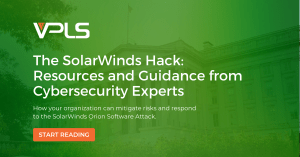
The SolarWinds Hack: Resources and Guidance from Cybersecurity Experts
Find out how your organization can mitigate risks and respond to the SolarWinds Hack in this guide from leading cybersecurity experts.

Find out how your organization can mitigate risks and respond to the SolarWinds Hack in this guide from leading cybersecurity experts.